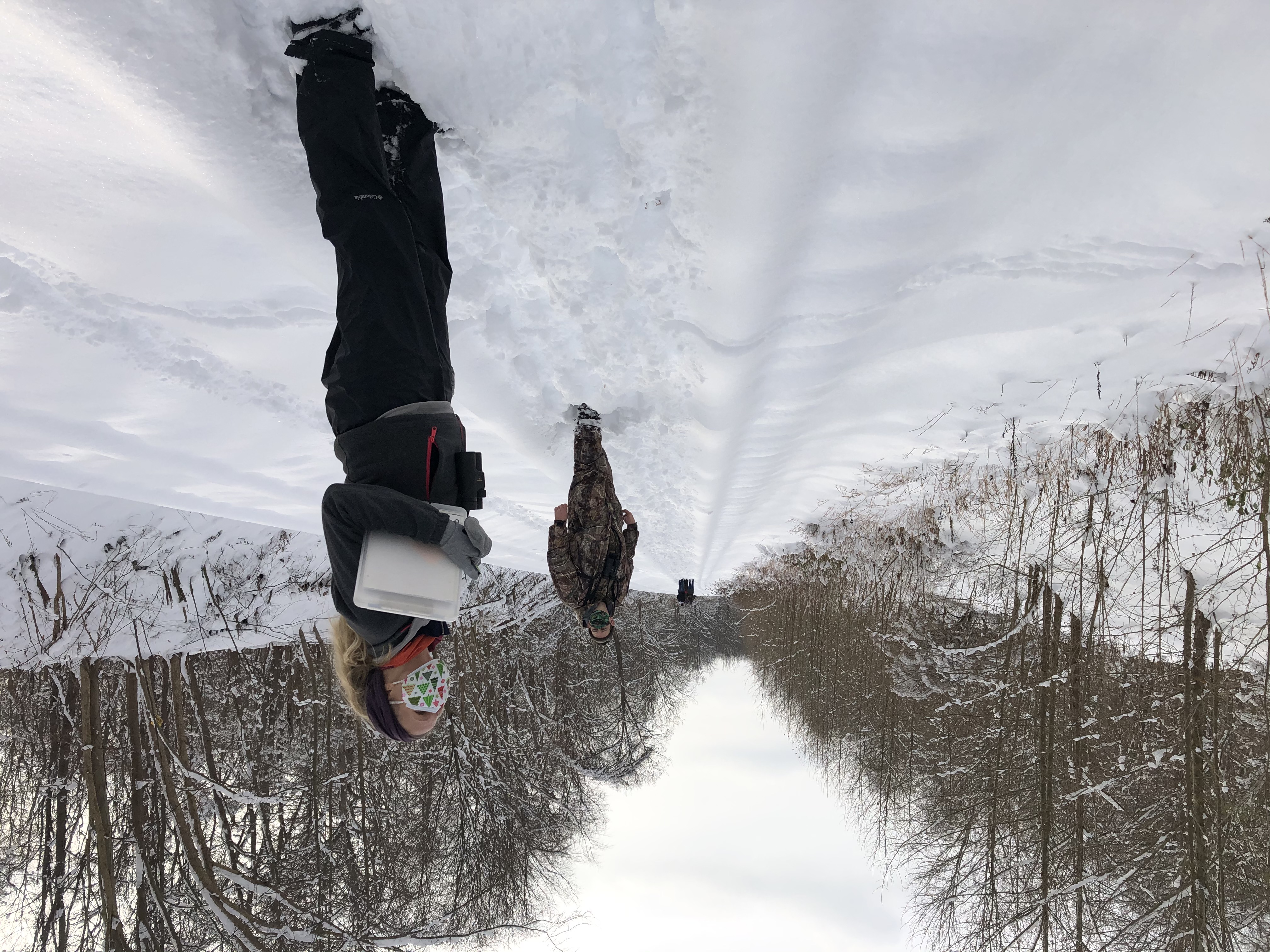Blog

#bioPGH Blog: A Snowy Day for Community Science
 A resource of Biophilia: Pittsburgh, #bioPGH is a weekly blog and social media series that aims to encourage both children and adults to reconnect with nature and enjoy what each of our distinctive seasons has to offer.
A resource of Biophilia: Pittsburgh, #bioPGH is a weekly blog and social media series that aims to encourage both children and adults to reconnect with nature and enjoy what each of our distinctive seasons has to offer.
The early morning light seemed a little brighter from all of the snow — and my goodness was there snow! Even though we were preparing to count birds, I still couldn’t resist my inner five-year-old’s excitement to stomp in a few snow drifts along the way. Plus, I knew that some of the birds we were likely to see today — eastern bluebirds, cardinals, blue-jays, juncos, and chickadees — were going to stand out marvelously on a sparkling white backdrop. I adjusted my two masks (after all, this was science, but it was still science in a pandemic) and we ventured into the trees. The annual Audubon Society Christmas Bird Count community science event had begun!
Every year, regional Audubon Society chapters across North America coordinate hundreds of community-level birding events, dubbed the Christmas Bird Count or simply the CBC, between the days of December 14 and January 5. As these are volunteer-driven events, community members, even those with no experience in birding, are encouraged to participate alongside experienced individuals as they monitor birds in rural, suburban, and urban areas. The goal of these bird counts is simple: document every bird that is seen. First begun in 1900 as an alternative to massive over-hunting social events that used to take place over the holidays, these bird counts have become the longest running community science efforts in the country; and they have produced over a century’s worth of data on bird activity to show for it.
“The Christmas Bird Count (CBC) is the gold standard for Community Science programs, as well as the longest running,” says Chris Kubiak, director of education for the Audubon Society of Western Pennsylvania. “Now in its 121st year, the CBC engages the public to take an active part in science by counting birds in a specific count circle on a specific day.” And as Chris notes, the data collected over the decades is absolutely invaluable.
“Most importantly it helps us as scientists track both long and short-term trends in bird populations. Analysis of more than a century's worth of data can reveal the decline of some species, and the recovery of others, providing a deeper understanding of conservation measures that can help birds.”
Biologists, non-profits, and governmental agencies have used the data from the CBC for a variety of projects. The data has been used multiple times in federal climate change reports, and scientists have been able to assess the impacts of hurricanes on bird habitat, changes in species abundance, changes in habitat use, and much more on both individual species and broad community levels because of CBC data.
On top of being incredibly valuable from a scientific perspective, the annual bird counts are just…fun! The count I attended this past weekend was just outside Freeport, and this year, we saw eastern bluebirds, juncos, song sparrows, the American tree sparrows, swamp sparrows, three different kinds of woodpeckers, mute swans (!), two juvenile bald eagles (!!), and many more. Plus, the outdoors in the winter always provide something fascinating to explore, and watching tiny birds flitter through thickets — seemingly oblivious to the cold — is incredible.
Chris notes, “It's important because it's fun and you don't need any prior experience! Just reach out to the count circle leader (at ASWP's website) and get out there and count birds!”

Listening for a red-bellied woodpecker with my two masks and snowpants.
Connecting to the Outdoors Tip: I was able to enjoy a pandemic-safe count, but be sure if you are in groups that you follow suggested guidelines from health officials. If you would like to do some bird-counting from a little closer to home, check out our upcoming Fairchild Challenge activity from Cornell Lab of Ornithology’s Celebrate Urban Birds program.
Select Images: Cover, Wikimedia User Mdf, CC-BY-SA-3.0; and header, Vaidor Otsar CC-BY-SA-3.0

